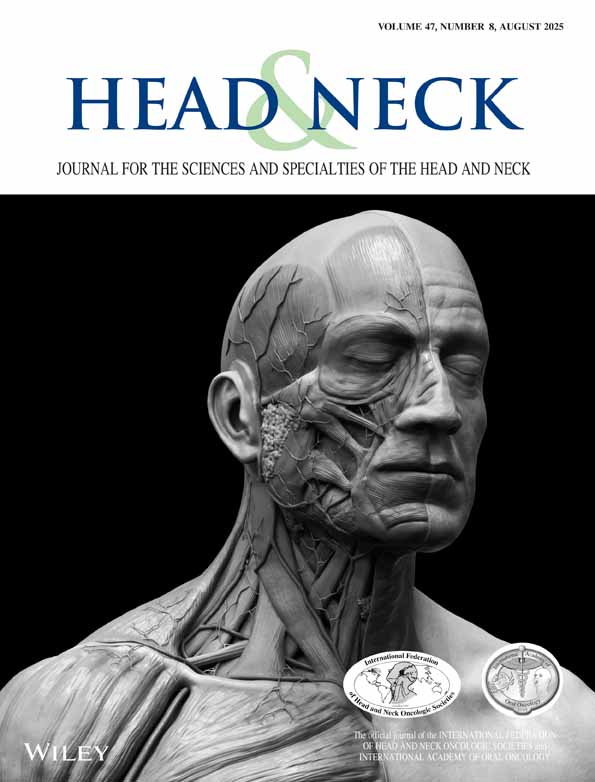Sensory topography of the oral cavity and the impact of free flap reconstruction: A preliminary study†
Presented at the Eastern Section of the American Laryngological, Rhinological and Otological Society, Inc., Philadelphia, PA, February 2002
Abstract
Background.
The purpose of this prospective randomized study was to (1) assess the computerized pressure-specific sensory device (PSSD) as a tool for measuring oral cavity sensation, (2) establish a topographic sensory map of the oral cavity, and (3) objectively evaluate postoperative sensory recovery of noninnervated oral cavity free flap reconstruction.
Methods.
Twenty-three healthy control subjects were recruited to test four intraoral sites and the volar forearm. Sensory scores were evaluated for consistent trends between an established sensory tool, the Semmes Weinstein Monofilament (SWM), and the PSSD. Sensory control values were then compared with those of 18 patients who underwent reconstruction of the oral cavity with a noninnervated microvascular free flap.
Results.
The SWM testing demonstrated the lowest sensory thresholds in the lower lip, followed by the lateral tongue, buccal mucosa, and central tongue. The PSSD also demonstrated the lowest sensory thresholds in the lower lip followed by the lateral tongue; however, the central tongue demonstrated a lower sensory threshold than did the buccal mucosa. The neotongue of patients with noninnervated free flaps demonstrated inferior sensation compared with the native tongue (p < .05).
Conclusions.
We have established normal sensory values for the oral cavity, skin of the volar forearm, and noninnervated free flap tissue within the oral cavity. Although discrepancies exist between the data derived from the SWM and the PSSD, the PSSD represents a reliable, sensitive, and easy method for assessing sensation of the oral cavity. Furthermore, PSSD testing is not affected by saliva or movement. © 2004 Wiley Periodicals, Inc. Head Neck 26: 884–889,2004




